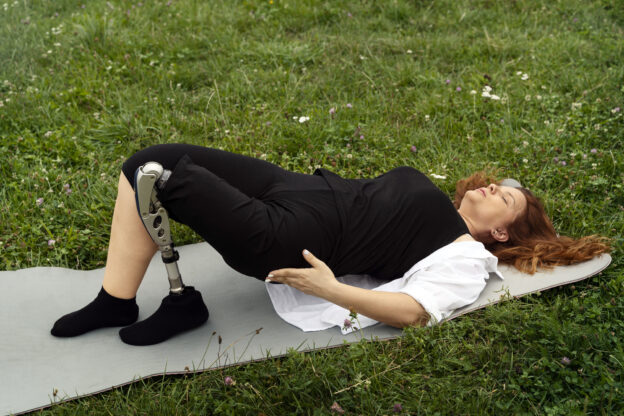Introduction
The pelvic floor plays a crucial role in our daily lives, even though it often doesn’t get the attention it deserves. This network of muscles and tissues supports vital organs like the bladder, uterus, and rectum and is essential for functions like urination, bowel movements, and sexual health. However, factors like childbirth, aging, and medical conditions can weaken these muscles, leading to discomfort and disruptions in everyday life.
If you’re experiencing issues with your pelvic floor, you’re not alone. Many people seek solutions to regain their strength and confidence. If you’ve ever searched for “pelvic floor rehab near me,” this guide is for you. In this article, we’ll explore the importance of pelvic floor rehabilitation, the common conditions it addresses, and the steps involved in restoring your pelvic health.
Understanding Pelvic Floor Dysfunction
Pelvic floor dysfunction is a broad term that refers to a range of issues caused by a weakened, tight, or overactive pelvic floor. These problems can significantly impact your quality of life, so it’s important to address them promptly. Complementary treatments like Registered Massage Therapy in Langley can also support your recovery journey.
Common Causes of Pelvic Floor Issues
Pelvic floor problems can arise from a variety of factors, including:
- Childbirth: Vaginal delivery can stretch or damage pelvic floor muscles.
- Aging: Muscle tone naturally decreases with age, affecting the pelvic floor.
- Chronic Strain: Activities like heavy lifting or chronic coughing can weaken these muscles.
- Surgery: Pelvic surgeries, such as hysterectomies, may affect muscle function.
Understanding the root cause of your discomfort can guide you toward the most effective solutions.
Symptoms of Pelvic Floor Dysfunction
Signs that you might need pelvic floor rehabilitation include:
- Urinary or bowel incontinence
- Pelvic pain or pressure
- Difficulty emptying the bladder or bowels
- Pain during sexual activity
If any of these symptoms sound familiar, you may benefit from searching for “pelvic floor rehab near me” to find professional help.
Benefits of Pelvic Floor Rehabilitation
Pelvic floor rehabilitation offers a non-invasive and effective way to address many of the issues associated with pelvic dysfunction. It’s a comprehensive approach that focuses on restoring strength, flexibility, and control.
Improved Bladder and Bowel Control
One of the most immediate benefits of pelvic floor therapy is improved control over bladder and bowel functions. Targeted exercises strengthen the muscles responsible for preventing leaks and ensuring proper elimination.
Relief from Pain and Discomfort
Pelvic pain can be debilitating, affecting your ability to sit, stand, or even enjoy daily activities. Rehabilitation helps alleviate pain by relaxing tense muscles and improving overall function.
Enhanced Quality of Life
By addressing the root causes of discomfort, pelvic floor therapy can help you regain confidence and enjoy a more active lifestyle. This holistic approach empowers you to take control of your health and well-being.
What to Expect from Pelvic Floor Rehab
When you search for “pelvic floor rehab near me” and schedule your first session, you might wonder what to expect. Pelvic floor rehabilitation typically involves a combination of assessment, treatment, and education tailored to your specific needs.
Initial Assessment
Your journey begins with an evaluation by a trained specialist. This assessment includes:
- A review of your medical history
- A discussion of your symptoms and goals
- Physical exams to assess muscle strength and function
The goal is to identify the underlying issues and create a customized treatment plan.
Treatment Methods
Pelvic floor rehabilitation incorporates various techniques to restore muscle function, including:
Pelvic Floor Exercises
Also known as Kegel exercises, these targeted movements strengthen and relax the pelvic muscles. Your therapist will guide you in performing them correctly to ensure effectiveness.
Manual Therapy
Hands-on techniques, such as massage or myofascial release, can help reduce tension and improve blood flow to the pelvic region.
Biofeedback
Biofeedback technology provides real-time information about muscle activity, helping you learn how to engage and relax your pelvic floor effectively.
Tips for Maintaining Pelvic Health
Rehabilitation doesn’t end after your therapy sessions. Incorporating healthy habits into your daily routine can help maintain the progress you’ve made.
Practice Good Posture
Proper posture reduces strain on the pelvic floor and promotes better alignment. Throughout the day, focus on keeping your back straight and your core engaged.
Stay Active
Regular physical activity strengthens the muscles supporting your pelvic region. Low-impact exercises like walking, swimming, or yoga can be particularly beneficial.
Manage Your Weight
Maintaining a healthy weight reduces pressure on the pelvic floor, lowering the risk of dysfunction over time.
When to Seek Help
If you’re experiencing symptoms that interfere with your daily life, it’s time to seek professional assistance. Searching for “pelvic floor rehab near me” is a great first step toward finding the care you need.
Signs You Need Professional Support
- Persistent pelvic pain
- Incontinence that doesn’t improve with self-care
- Difficulty engaging or relaxing pelvic muscles
- Symptoms following childbirth or surgery
Early intervention can prevent minor issues from becoming more severe, so don’t hesitate to seek help.
Conclusion
Pelvic floor rehabilitation is a powerful tool for improving strength, function, and confidence. Whether you’re dealing with postpartum challenges, age-related changes, or chronic pain, professional care can make a significant difference.
If you’ve been searching for “pelvic floor rehab near me,” know that help is within reach. By understanding the causes of pelvic dysfunction, exploring the benefits of rehabilitation, and committing to a personalized treatment plan, you can take charge of your pelvic health and enjoy a more comfortable, active life.








